Selecting the best raspberry varieties for the Moscow region is the first and important stage for a gardener who decides to start growing raspberries in this region. You need to study the descriptions of varieties, read reviews from gardeners, and look at photos.
| Content:
|
|
When growing raspberries in the Moscow region, you should pay attention to frost-resistant varieties that manage to ripen in a short summer period. Equally important are taste, fruit size and yield. |
Remontant raspberry varieties for the Moscow region
In the climatic conditions of the Moscow region, it makes sense to grow early and mid-ripening remontant varieties of raspberries. It is difficult to achieve a full harvest from late raspberries. According to statistics, only 70% of the fruits of late raspberries ripen.
Hercules
|
Large-fruited remontant variety bred by Kazakov. More than half the length of the stems is covered with fruits. |
The berries tolerate transportation well and are suitable for both fresh consumption and all types of processing. To obtain a better harvest, it is recommended to cut off the shoots for the winter. Immunity to pests and diseases is high.
- Medium late ripening. The first berries appear on the shoots of the first year by mid-August.
- Productivity 2–2.5 kg per plant.
- The berries are large, 6 g, maximum - 10 g. The pulp is dense, sweet and sour, with a pronounced aroma. Fruits until frost.
- The height of the bush is 1.4-1.8 m. The bush is slightly spreading, upright, does not grow much, and does not need support. The shoots are covered with thorns.
- The culture prefers sunny places with low groundwater levels. The distance between bushes is maintained at least 0.7-1.0 m.
- Frost resistance -33°C (zone 4). Recommended for cultivation in the Central region. Tolerates winters near Moscow well.
“Delicious, but very prickly raspberries. My Hercules grows in the sun, and I don’t even feel the acid in the taste. I like the way the berries behave in preparations - they almost don’t fall apart.The strong smell is especially good when making liqueurs and homemade liqueurs.”
Joan Jay
|
The remontant variety of English selection is distinguished by large berries and an abundant harvest. |
Thornless shoots simplify care and harvesting. A berry with a white tip indicates that the fruit is unripe. The color of ripe raspberries is uniform.
- The ripening period is medium-late. With complete autumn pruning of shoots, fruiting begins in early August and continues until frost.
- The yield from one bush is about 2.5 kg.
- The berries weigh 6-7 g, are cone-shaped, red. The weight of the fruits does not decrease by the end of fruiting.
- The bushes are powerful, compact, up to 1 m high. Despite this, they require tying to a trellis. The shoots are thornless.
- Choose a place for planting raspberries that is sunny, protected from wind and strong drafts. The soil for planting should be loose, nutritious, and well-drained.
- Frost resistance is average -23°C (climatic zone 5). Without shelter it overwinters at -16°C. In regions with temperatures below this limit, raspberries are additionally covered.
“I like Joan Jay raspberries, they are thornless, productive, completely cut in the fall, which is a big relief in winter cover. The berries themselves are large and tasty.”
Jacqueline
|
An early variety of remontant raspberry of American selection with excellent taste. The variety is more suitable for personal consumption rather than for commercial purposes. |
Immunity to diseases and pests is high. The berry withstands hot periods well and does not bake. In rainy, cool periods it retains its taste.
- Medium early ripening - early August.
- The yield is about 2 kg per plant.
- The berries are large, 8-9 g, aromatic, with a rich raspberry aftertaste. The pulp is dense, burgundy in color, and the taste is sweet.The berries ripen gradually, from the base to the spout.
- The bushes are powerful, up to 1.8 m high, semi-spreading. There are few thorns.
- Prefers high, sunny areas. The distance between plants is maintained at 1.0 m.
- Frost resistance -33°C (zone 4). Overwinters without shelter.
“The first berry appears earlier than a simple garden raspberry. Tolerates heat well, excellent taste and size of fruits.”
Firebird
|
Among the remontant raspberry varieties, the Firebird is one of the highest-yielding. |
The fruits are suitable for all types of processing. According to gardeners, the berries have a good taste.
- Late ripening - in the second half of August. Before frost, the crop manages to yield up to 90% of the harvest.
- The yield is 6-8 kg per plant.
- The red berries, weighing about 6 g, are all approximately the same size. The shape is conical, the taste is sweet and sour, dessert, the flesh is juicy.
- The bushes are slightly spreading, 1.5-2.0 m high, covered with thin soft thorns. During the season it forms 5-7 replacement shoots.
- The variety is not picky about soil; the distance between bushes is maintained at 1.0-1.5 m.
- Frost resistance down to -29°C (zone 4).
“Remontant raspberries of the Firebird variety do not require complex care and are not afraid of pests. If you leave 3-5 shoots during spring pruning, it gives an excellent harvest. The berries are large, juicy and sweet. I’m very pleased.”
Giant
|
The Giant variety is valued for its high yield, large fruits with a dessert taste. When ripe, the fruits do not fall off, which extends the harvest time by a week. |
- Medium ripening period.
- The yield of 1 bush is from 5 - 7 kg.
- The berries weigh 7 - 15 g, are red in color with a glossy surface. The pulp is juicy and dense. The taste is sweet and sour.
- The height of the bushes is from 1.5 to 1.8 m. The shoots are thick with strong branches without thorns. The shrub is compact in shape.
- Plant in sunny areas without drafts, with low groundwater levels. The distance between bushes is maintained at 1.5 m.
- Frost resistance down to -30°C (zone 4). The variety was bred specifically for regions with harsh climates. Young shoots overwinter safely with shelter.
“Giant is my favorite variety. Large, aromatic berries - with minimal time spent growing raspberries, what else does a gardener who comes to the site only on weekends need? High yields make it possible to prepare raspberries for the winter.”
Don't forget to read:
Description of the best varieties of remontant raspberries with photos and reviews from gardeners ⇒
Porana dew
|
A large-fruited variety of yellow raspberries was created by Polish breeders. It is especially valued for its abundant harvests, ease of cultivation, and excellent transportability. |
- The ripening period is late, when the shoots are mowed in the fall: from mid-August until the first frost.
- Productivity 7 kg per plant.
- The fruits are large, 5-10 g. The shape of the fruit is spherical, the flesh is dense. The taste is sweet and sour and depends on weather conditions.
- The bushes are powerful, 1.5-1.7 m high. The shoots are straight, with hard thorns.
- For planting, fertile and loose soil of neutral acidity is desirable; the distance between bushes is maintained at least 0.7 m.
- Frost resistance -33°C (zone 4). Overwinters without shelter, or is cut off completely for the winter.
“The Porana raspberry will become a true find for many domestic gardeners. It is no coincidence that it is called “the variety for the lazy.” She will forgive some mistakes in care, giving the owners of the site a generous harvest.”
Orange miracle
|
An excellent variety with large fruits and high yield. The berries do not fall off and are distinguished by good keeping quality and transportability. The taste depends on weather conditions. |
- Medium ripening period.When grown on annual shoots, the berries ripen from mid-August until the first snow.
- The yield is 4-5 kg per plant.
- The average weight of the berries is 5...10 g, the shape is conical, the color is bright orange, as in the photo. The color of fruits is affected by weather conditions. The pulp is tender and aromatic. The taste is sweet with sourness.
- The shoots are covered with thorns along the entire length, grow up to 1.8 m. The bush is compact, forms up to 8 shoots. During the ripening of the harvest, the branches may bend low, so they require a garter. The spines are medium, located closer to the base.
- The crop prefers loamy soils and grows well in partial shade. The distance between bushes is maintained at least 1.0 m.
- Frost resistance -32°C (zone 4).
“The variety is one of my favorites. There were other yellow-fruited raspberry varieties, but I gradually got rid of them and replaced everything with this one. I’ve adapted to growing it with a more “spacious” planting: my bushes are placed at a distance of about 150 cm from each other. This makes them easier to care for, and the thorns hardly interfere.”
Nizhny Novgorod
|
One of the best large-fruited varieties of remontant raspberries. Designed for universal use. Recommended for growing in the Moscow region and the middle zone. |
Nizhny Novgorod is resistant to diseases and pests. According to gardeners, the berries tolerate transportation well.
- Ripening is early, the first berries can be expected in mid-July.
- Productivity 2.5 -3.5 kg per bush.
- The berries weigh an average of 6 g, but can reach 12 g. The berries are conical in shape, reminiscent of a dark red thimble. The pulp is dense, sweet and sour, with a pleasant aroma.
- The height of the spreading bush is 1.5-1.9 m. There are 7-8 shoots per bush. There are more spines at the base.
- Frost resistance -35°C (zone 4).According to cultivation technology, autumn mowing of shoots is recommended.
“For several years I have been growing Nizhny Novgorod for sale. Its fruits are always smooth, large, and dense. Transportability and keeping quality are good."
Red varieties of regular raspberries for the Moscow region
Arbat
|
Large-fruited and productive raspberry variety. The berries are easily removed from the bush, without being crushed. Universal use, consumed fresh and for preparations, as well as for decorating products. Immunity to diseases is high. |
- Malina Arbat mid-early ripening.
- Productivity shows 4-5 kg per bush.
- Weight of berries is 12 g. The fruits are burgundy in color, dense, with an elongated conical shape. The taste is excellent. Up to 20 berries ripen on fruit branches.
- The height of the crop is 1.9 m. The shoots are without thorns.
- Grows well on fertile, loose soils; the distance between bushes is maintained at 1.0-1.5 m.
- Arbat is characterized by high resistance to frost.
“Everything is as promised in the description of the variety - raspberries without thorns and with huge delicious raspberries. When I planted it, I had doubts, since the description rarely completely matches what is growing. A bountiful harvest allows you to make good preparations for the winter and eat plenty of fresh berries.”
Radzieva
|
Dessert variety created in Poland. It has proven itself to be an early variety with attractive marketable berries. Due to its good shelf life and transportability, Radziev raspberries are recommended for industrial cultivation in large volumes. |
- Ripening is early, the third ten days of June.
- Productivity 4-6 kg per bush.
- The berries are large, conical, dense, do not crumble, do not wrinkle, and do not flow. The taste is balanced, sweet, aromatic.
- The bushes are powerful, up to 1.8 m high, medium spreading, with a small number of thorns.
- Loves moisture.If it is not possible to water regularly, then it is necessary to mulch the plantings well.
- Frost resistance -25°C (zone 5). Due to moderate frost resistance, Radziev raspberries need additional shelter.
“An impressive marketable berry, good yield, dessert taste.”
Hussar
|
The variety is distinguished by beautiful berries, high yield and extended fruiting. The culture tolerates extreme temperatures well. Immunity to fungal diseases is high. |
- Ripening dates are early. Fruiting lasts from late June to mid-August.
- Productivity – up to 6 kg.
- The fruits are large – 10-12 g. The berries are red, conical in shape. The taste is sweet and sour.
- The shoots are straight, powerful, up to 3 m high. The thorns are located at the base of the shoot.
- It is recommended to grow in soils with a neutral pH level. The top layer of soil should be kept moist. Maintain a distance of 1.0-1.5 m between bushes.
- Frost resistance -25°C (climatic zone 5). When grown in the Moscow region, the roots need to be insulated. The root part of the bushes should be covered with a thick layer of straw or sawdust.
“This raspberry variety is very unpretentious. With very poor care we were able to get a fairly high yield. Raspberry Gusar easily tolerates lack of moisture. I recommend it for summer residents who very rarely work in their garden. In short, she can handle Spartan conditions.”
Patricia
|
The Patricia variety attracts gardeners with high yields and sweet berries. Raspberries are intended for cultivation in the Moscow region. The fruits are easily removed from the stalk and do not fall off for a long time when ripe. The variety is not resistant to late blight. |
- Early ripening fruits. In the Moscow region, harvesting begins in the first ten days of July. Fruiting lasts 3-4 weeks.
- Depending on the growing conditions, the amount of harvest from one plant can range from 5 to 8 kg.
- The berries are large, elongated conical, dark crimson in color, weighing 8-12 g. The taste is sweet, the flesh is tender.
- The bushes are semi-spreading, up to 1.8 m high. The shoots are straight, without thorns.
- Loose soil or black soil with a minimum level of acidity is suitable for planting; the distance between bushes is maintained at least 0.7 m.
- Frost resistance -32°C (climatic zone 4).
Maroseyka
|
The peculiarity of the variety is double berries; they can be found in small quantities on the bushes. Characterized by large fruits. |
- The variety is mid-season. Fruiting begins in early July and lasts until August.
- Productivity is about 4-6 kg per bush.
- Fruit weight - up to 12 g. Juicy berries are colored red and have a pleasant aroma and delicate pulp.
- The height of the bush is average, 1.6 m. The shoots are without thorns.
- A lot of sunlight and heat will contribute to the accumulation of sugars in the berries and the ripening of the crop.
- The height of the crop is 1.5-1.8 m. The distance between the bushes is maintained at least 0.7 m.
- Frost resistance -33°C (climatic zone 4). Winters well in the middle zone and Moscow region.
“The berry does not fall off, it is tasty, with a real raspberry aroma, like small forest raspberries. Maintenance is not labor-intensive, but the main work – watering, fertilizing, garter – should not be ignored.”
Yellow varieties of regular raspberries for the Moscow region
Yellow Cumberland
|
Large-fruited, high-yielding variety with excellent taste. Immunity to diseases and pests is high. Ripe fruits do not fall off. The main disadvantages include the abundance of thorns and the mediocre sour taste of the berries. |
- Ripening is average, mid-July.
- The yield is high, 10-14 kg per plant.
- The berries are yellow, overripe - brownish. The shape is spherical, as in the photo. The pulp is dense. The taste is sweet, dessert. Weight – 4-6 g.
- Tall plant, 2.5-3.0 m. The shoots are abundantly covered with thorns. There are even spines on the underside of leaf petioles. Numerous thorns allow the yellow Cumberland to be used as a hedge.
- Prefers a sunny place for growth with loose, fertile soil. The distance between bushes is maintained at least 0.8 m.
- Frost resistance -34°C (climatic zone 4). In the Moscow region it winters without shelter.
“A very interesting hybrid, especially the color looks unusual. It produces berries abundantly (about a small bucket from one bush), and the plant is unpretentious.”
Amber
|
Summer raspberry variety with yellow berries. They are easily separated from the stalk, do not wrinkle or flow when collected. The bushes do not sprout, do not “spread” over the area, reproduction occurs by rooting the tops. |
- Medium ripening period. Fruiting begins in mid-July.
- Productivity is high, can reach 5-6 kg per bush.
- The berries are spherical, yellow-orange, collected in clusters of 6-10 pieces. The pulp is juicy, fleshy, aromatic. The taste is sweet with sourness.
- The bushes are flexible, tall, and require tying to a trellis. The thorns are concentrated only on the lower part of the stems.
- Prefers sunny places without stagnant water; the distance between bushes is 1.0-1.5 m.
- Frost resistance -33°C (climatic zone 4). In the Moscow region it winters without shelter.
“I bought yellow-fruited raspberries for decorative purposes. The bushes look beautiful, the color of the fruit is closer to apricot.I don’t really like the taste, I think there’s not enough sugar, some of the berries are sour.”
Valentina
|
One of the best varieties of yellow raspberries, which attracts gardeners with its high yield, frost resistance, early ripening and excellent taste. Thanks to the bright color of the fruits, the crop is highly decorative. |
The application is universal; the dense pulp allows the berries to maintain their presentation during transportation.
- Valentina's ripening is early, the first berries ripen at the end of June (Moscow region).
- Productivity – more than 5 kg per plant.
- The average weight of the berries is 5-7 g. The berries are bright apricot color, the taste is sweet with a raspberry aroma. The pulp is juicy and dense. The shape of the fruit is round-conical.
- The height of the shoots is up to 2.5 m, the formation of shoots is low. The shoots are straight, weakly branched, with a small number of thorns.
- For growth, it prefers open, illuminated areas, without excess moisture; the distance between bushes is maintained at least 1-1.5 m.
- Frost resistance -35°С…-29°С (zone 4). You can prepare bushes for winter by mulching. To do this, sprinkle the roots with peat, humus and straw.
Yellow giant
|
Large-fruited variety for dessert purposes. The bushes are unusually decorative. The reduced amount of dyes makes it hypoallergenic. Ripe berries are prone to shedding and are not stored for a long time. The variety is resistant to diseases and pests. |
- Medium-late ripening period, berries ripen from early August to late autumn.
- Productivity – 3.2 kg per bush.
- The average weight of the berry is 2.7 - 5 g, the shape is a cone with a blunt end. The berries are tasty and aromatic.
- The height of the bush is up to 2 m, it requires gartering to trellises. The thorns are medium-sized, green, distributed throughout the shoot.
- Grows best in sunny places with low groundwater levels.When planting, maintain a distance between bushes of 0.7-1.0 m.
- Frost resistance -35°С…-29°С (zone 4).
“The Yellow Giant variety tolerates the winter of the middle zone perfectly, so it does not need additional shelter. Absolutely unpretentious, does not require any special care. We feed only organic matter - manure or mullein, periodically water it, weed the weeds and loosen the soil. The only drawback is that it grows a lot.”
Honey
|
Raspberries of this variety are high-yielding with excellent taste. Gardeners like honey for its ease of growing and harvesting - the berries adhere tightly to the fruit, do not fall off, and there are few thorns on the stems. |
The shelf life and transportability characteristics are average. Honey raspberries have high immunity to diseases and pests.
- Medium early ripening variety. The harvest can be harvested in June-July.
- Productivity is 3 - 8 kg and higher under favorable weather conditions.
- The berries are large, 2.8-5.9 g.
- The height of the shoots is up to 1.5 m, very spreading and dense, regular thinning is necessary.
- Prefers well-lit places in the garden with fertile soil. The distance between bushes should be at least 1 m.
- Tolerates frosts down to -29°C (zone 5).
Black raspberry varieties for the Moscow region
Cumberland
|
One of the oldest varieties of black raspberries. A feature of the bushes of this variety are strong, arched stems. Attracts gardeners with its high frost resistance. The fruits tolerate transportation well. |
- The ripening period is average, mid-July. Fruiting is extended.
- The yield is about 2.5 kg per plant.
- The average weight of the berry is 2-2.5 g. The taste is sweet with a blackberry flavor. The pulp is tender, with a delicate aroma. There are 10-15 clusters on each stem.
- The height of the bush is up to 2 m, the branches have thorns located quite densely.
- Prefers sunny places, does not like strong waterlogging of the soil, drafts. When planting, the distance between bushes is maintained at least 0.6 m.
- Frost resistance -40°C (zone 3, 4). When grown in the Moscow region and the central zone, it can winter without shelter.
“I really love Cumberland. I am satisfied with everything: taste, yield, and, most importantly, unpretentiousness and endurance. And what a compote!”
New Logan
|
A variety with an excellent harvest and tasty berries. Resistant to attack by insect pests and diseases. |
- Early ripening, the first berries ripen in early July.
- Productivity reaches 6 kg per plant.
- The berries are medium, weighing 2 g. They are characterized by a rich black color of the fruit with a glossy sheen. The taste is blackberry.
- The stems grow up to 1.5 m and are covered with hard thorns.
- Prefers sunlit places; the distance between bushes is maintained at least 0.7 m.
- Frost resistance -24°C (zone 5). In the Moscow region, during winters with little snow, it requires additional shelter.
Black Jewel
|
One of the best black raspberry varieties: high-yielding, drought-resistant, frost-resistant. 12-15 berries ripen at once on one fruit cluster. There are 20-25 inflorescences on each meter of stem. Resistance to powdery mildew is low. |
- Average ripening period, July-September. Fruiting is extended.
- Productivity 10 kg per plant.
- The weight of the berries is up to 4 g. The fruits are painted black and have a bluish coating. The shape is round. The taste is sweet with a blackberry aroma. The pulp of the berries is tender and elastic.
- The height of the bush is up to 2.5 m. The stems are erect, with thorns, of medium length.
- For planting, choose a sunny place, without stagnant water; the distance between bushes is maintained at least 0.7 m.
- Frost resistance -34° C (climatic zone 4). In the Moscow region it winters without shelter.
“Several years ago I planted Black Jewel raspberries, guided by feedback from neighbors. Berries in the shade are usually larger and juicier, the main thing is that there is no dampness.”
Bristol
|
Another excellent variety of black raspberries with large and sweet fruits. Good for high yield. Bristol is susceptible to fungal diseases. |
- Ripening time is average, July-August. Maturation is friendly.
- Productivity per plant is 5-7 kg.
- The fruits have a round shape, reminiscent of a blackberry, and are characterized by a sweet taste with tart notes. Weight – 5g.
- The height of the bush is 2.5-3 m, the shoots have thorns.
- Bristol prefers sunny locations. The bushes grow well in moderately acidic soils. The distance between bushes should be maintained at 0.8 m.
- Frost resistance -28°С…-34°С (zone 4). In the Moscow region it winters without shelter.
“For the third year now, I have been growing black raspberries on my plot. Raspberries consist of two varieties - Bristol and Cumberland. I chose black-fruited varieties because of their high yield and sugar content of the fruit.”
Breeding work to create the best raspberry varieties, including for the Moscow region, is ongoing. Therefore, over time, any owner of a garden plot, guided by the descriptions and reviews of amateur gardeners, will be able to choose the best raspberry for himself.
You might be interested:
- Planting and caring for raspberries in open ground ⇒
- Treatment of raspberries against diseases ⇒
- Treating raspberries against pests ⇒
- How to properly prune raspberries in spring, summer and autumn ⇒
- How does a raspberry tree differ from a regular raspberry and how to care for it ⇒
- Varieties of raspberry trees with descriptions, photos and reviews ⇒
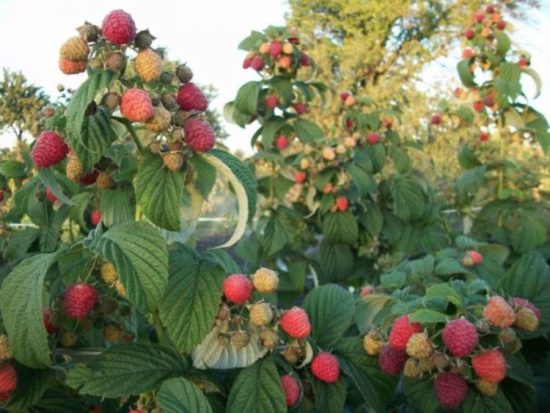
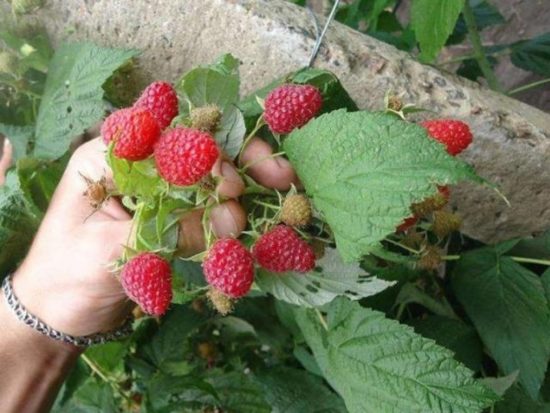

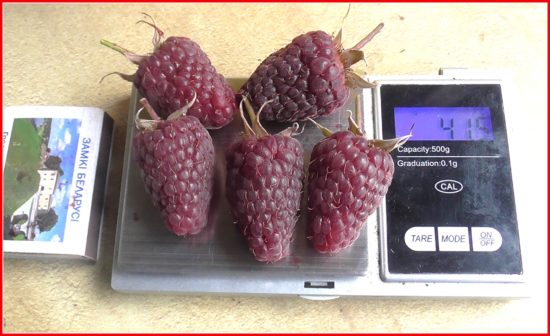
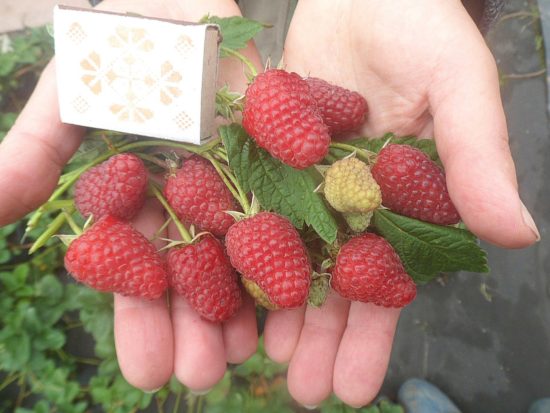
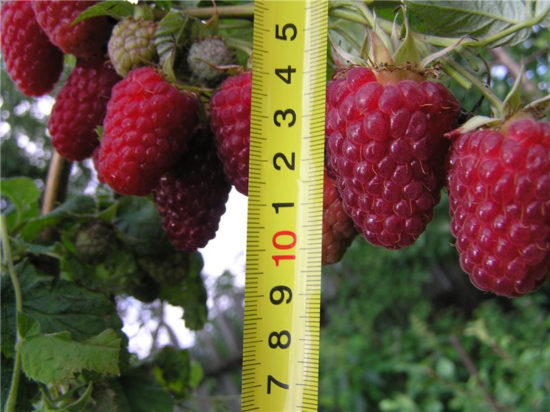
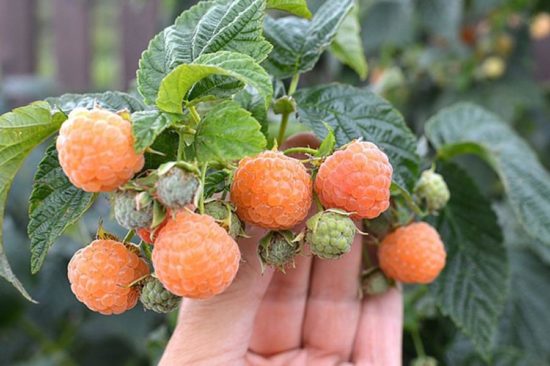
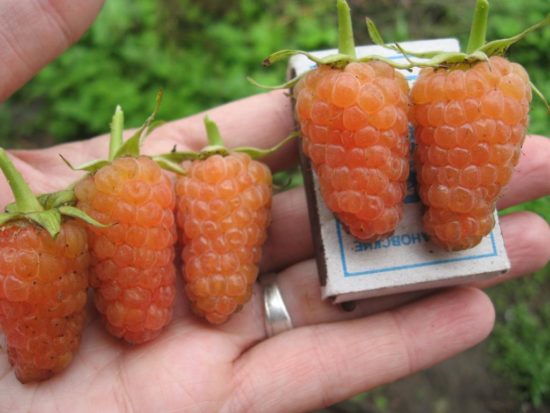
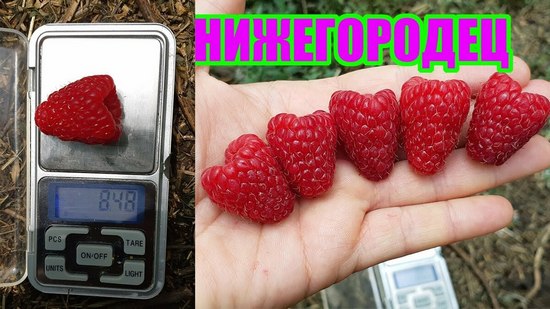
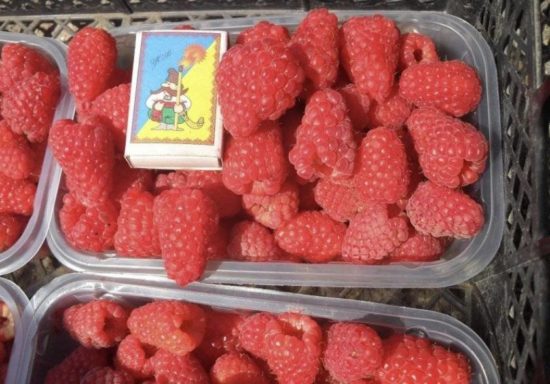
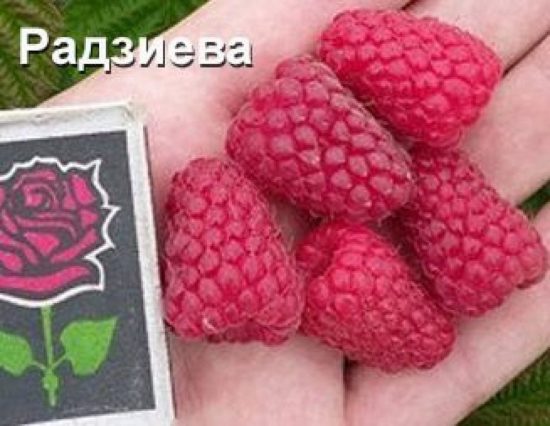
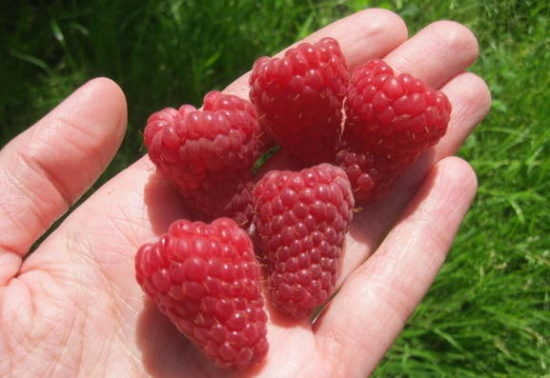
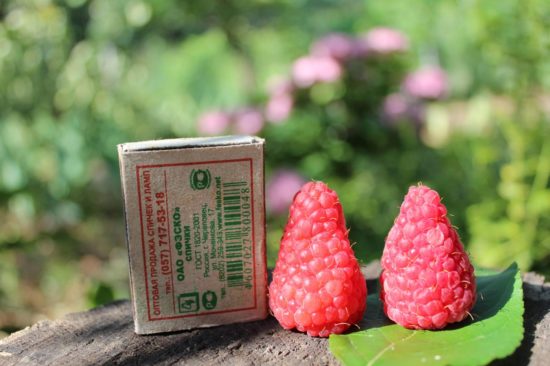
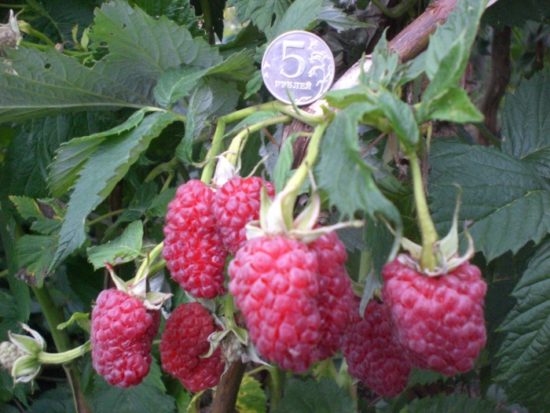
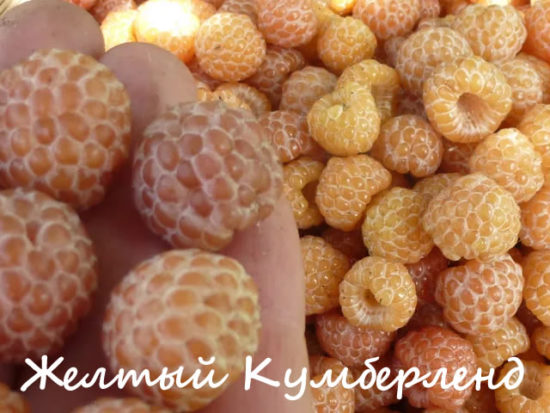

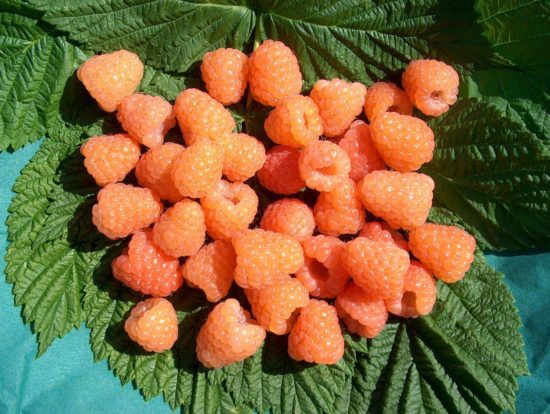
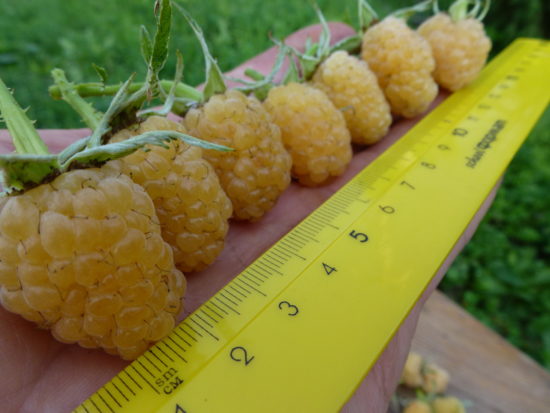
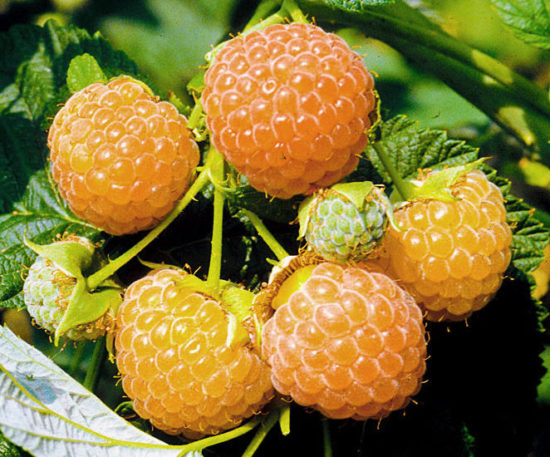
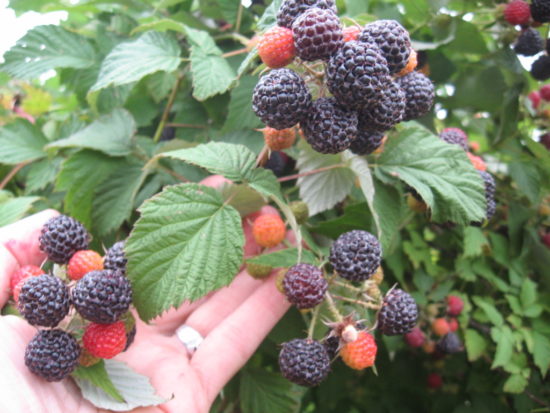
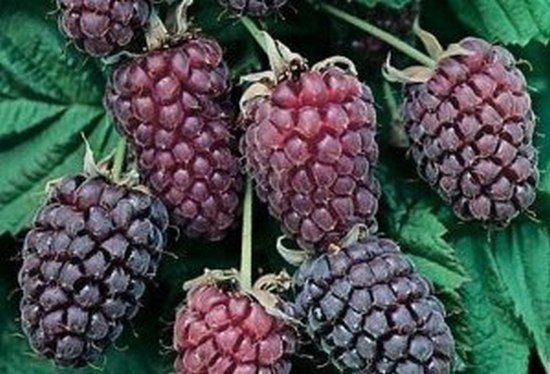
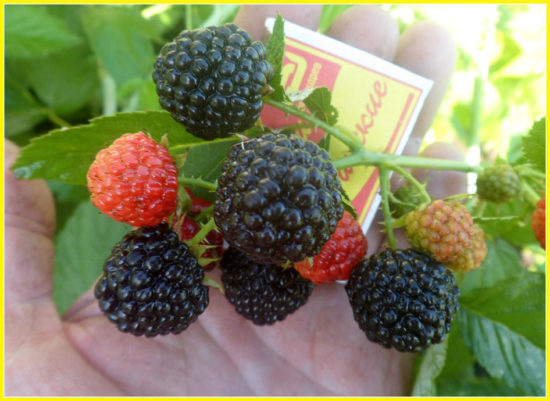
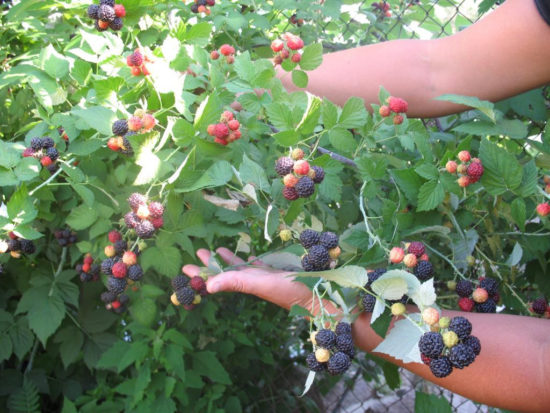

 CUCUMBERS NEVER GET SICK, I'VE BEEN USING ONLY THIS FOR 40 YEARS! I SHARE A SECRET WITH YOU, CUCUMBERS ARE LIKE THE PICTURE!
CUCUMBERS NEVER GET SICK, I'VE BEEN USING ONLY THIS FOR 40 YEARS! I SHARE A SECRET WITH YOU, CUCUMBERS ARE LIKE THE PICTURE! You can dig a bucket of potatoes from each bush. Do you think these are fairy tales? Watch the video
You can dig a bucket of potatoes from each bush. Do you think these are fairy tales? Watch the video
 How our fellow gardeners work in Korea. There is a lot to learn and just fun to watch.
How our fellow gardeners work in Korea. There is a lot to learn and just fun to watch. Eye trainer. The author claims that with daily viewing, vision is restored. They don't charge money for views.
Eye trainer. The author claims that with daily viewing, vision is restored. They don't charge money for views. A 3-ingredient cake recipe in 30 minutes is better than Napoleon. Simple and very tasty.
A 3-ingredient cake recipe in 30 minutes is better than Napoleon. Simple and very tasty. Therapeutic exercises for cervical osteochondrosis. A complete set of exercises.
Therapeutic exercises for cervical osteochondrosis. A complete set of exercises. Which indoor plants match your zodiac sign?
Which indoor plants match your zodiac sign? What about them? Excursion to German dachas.
What about them? Excursion to German dachas.